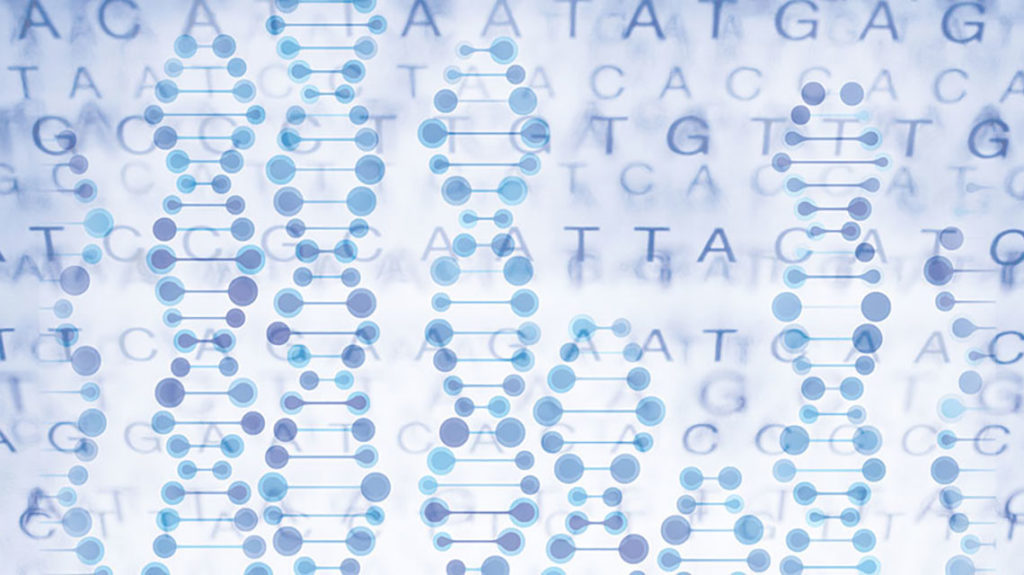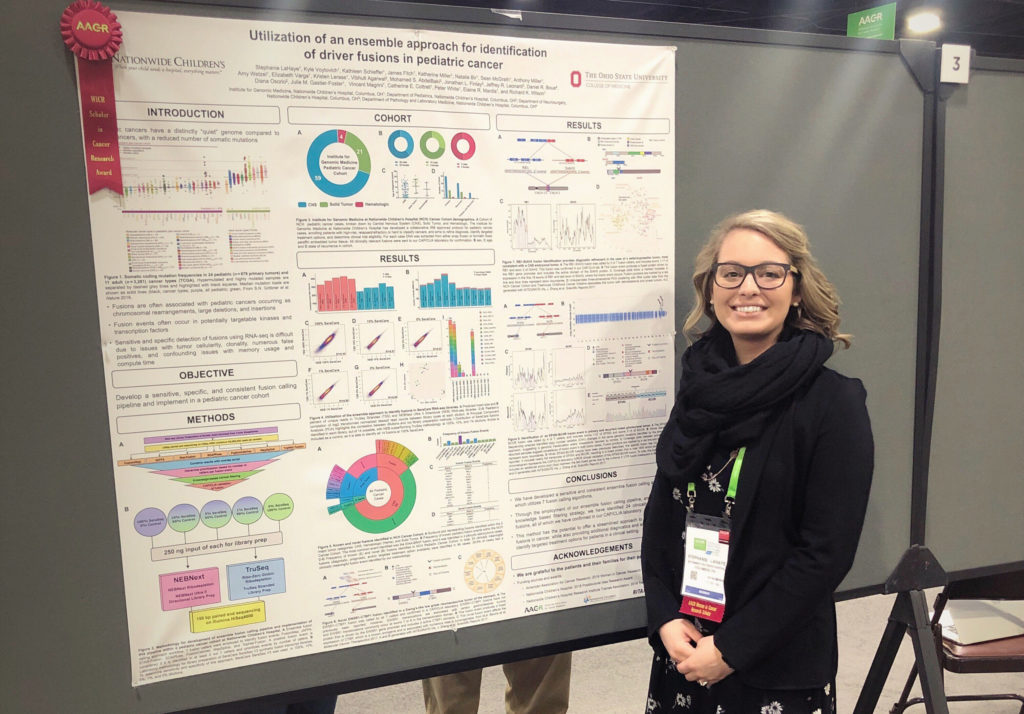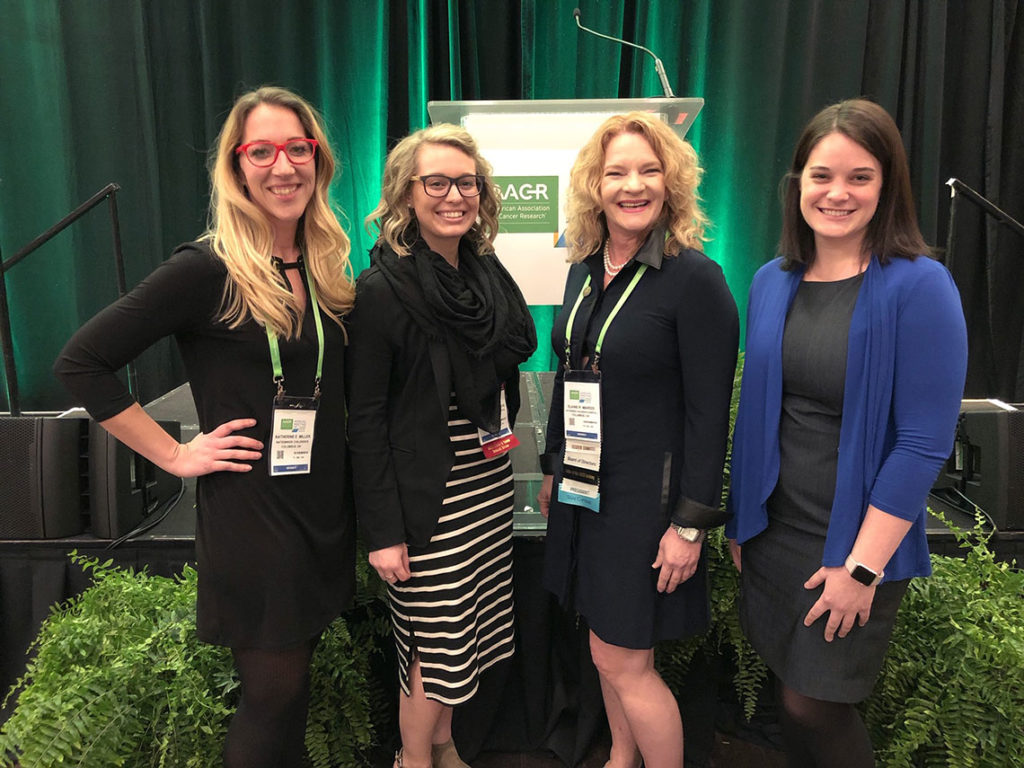A Novel Method of Data Analysis Enables Identification of Genetic Drivers of Pediatric Cancer
A Novel Method of Data Analysis Enables Identification of Genetic Drivers of Pediatric Cancer https://pediatricsnationwide.org/wp-content/uploads/2020/11/Achieving-Clarity-Header-1024x575.jpg 1024 575 Bailey Dye Bailey Dye https://pediatricsnationwide.org/wp-content/uploads/2021/03/Bailey_Dye_4-002.gif- June 26, 2019
- Bailey Dye

An innovative approach to data analysis can more efficiently identify gene fusion events common to pediatric cancers, and inform clinical diagnoses and treatment decisions.
The standard of care for cancer patients is changing. With the advent of personalized medicine, genetic testing is slowly becoming a routine clinical practice, and with it comes a better understanding of each individual’s unique needs.
“I think that one of the most important things we can do to help a cancer patient, is to gain a more complete understanding of the intricacies underlying their specific cancer, and to use a “personalized medicine” approach to help guide treatment,” says Stephanie LaHaye, PhD, a postdoctoral scientist in the Institute for Genomic Medicine (IGM) in the Abigail Wexner Research Institute at Nationwide Children’s Hospital. “Here at Nationwide Children’s Hospital, we are taking a case by case approach to refine diagnosis, better understand prognosis, and identify potential targeted treatment options for these patients.”
Using a multifaceted, automated, high-throughput approach to detect driver gene fusion events in patient RNA-sequencing (RNA-seq) data, Dr. LaHaye and the IGM group have identified 20 clinically meaningful fusions in 73 pediatric cancer cases at present. A fusion event refers to a chromosomal rearrangement, or a large deletion or insertion, and these events often occur in areas of the genome that are potentially targetable, such as kinases.
At Nationwide Children’s Hospital, an institutional review board (IRB) approved study protocol led by Catherine Cottrell, PhD, a senior director within the IGM, enrolls patients who have cancers that are difficult to diagnose, extremely rare, or resistant to treatment.
“To date, approximately 25% of our patient cohort has harbored a gene fusion event. This represents a substantial proportion of this patient population, and highlights the critical need for a sensitive method for the detection of gene rearrangement, to further characterize cancer drivers, therapeutic targets, and to enhance patient management” says Dr. Cottrell.
“This study is expanding our ability to identify fusion genes in pediatric cancers,” says Elaine Mardis, PhD, co-executive director of IGM at Nationwide Children’s Hospital. “In fact, we know many pediatric cancers result from fusion genes that occur abnormally in DNA, effectively resulting in the production of an abnormal protein product that disrupts normal cell growth and division processes.” This is a distinguishing feature of the pediatric cancer genomic landscape compared to adult cancer.
Dr. LaHaye and her colleagues, Kyle Voytevich, BS, a DevOps Engineer within the IGM, and James Fitch, BS, the IGM Informatics Infrastructure Group Systems Architect, are part of a larger team of IGM scientists focusing on the development of the fusion detection platform. This team is led by Peter White, PhD, senior director of the Computational Genomics Group at the IGM, Richard Wilson, PhD, executive director of the IGM, and Dr. Mardis, who have pioneered a team science method of developing innovative solutions in pediatric cancer research. Together they have designed a computational pipeline to more efficiently detect driver gene fusion events, in order to combat the issues of tumor cellularity, clonality and false positives that complicate the current single algorithm fusion detection method.
“Our automated approach takes seven fusion calling algorithms and overlaps those data, which allows us to remove false positives and only focus on what we predict to be the true positives,” says Dr. LaHaye, who was awarded the Women in Cancer Research: 2019 Research Scholar Award at the 2019 American Association for Cancer Research Annual Meeting for her work on this project. “We require at least two of the seven algorithms to call the fusion for it to be output, which we then hierarchically sort based on evidence. When we identify a potentially clinically relevant fusion, we work with our colleagues in the College of American Pathologists/Clinical Laboratory Improvement Amendments (CAP/CLIA)-certified clinical laboratory within the IGM, including Dr. Catherine Cottrell, to confirm the findings. Before we report our findings into the patient’s medical record, this clinical validation is performed, and so far, all of the fusions we have considered to be clinically relevant have been confirmed.”
 Dr. LaHaye with her poster, which earned her a 2019 Women in Cancer Research Scholar Award.
Dr. LaHaye with her poster, which earned her a 2019 Women in Cancer Research Scholar Award.
This information can then be used to inform the diagnosis and/or treatment of individual patients. One such clinically relevant fusion event was found in a low grade neuroendocrine stomach tumor of undetermined biologic potential.
“When we performed sequencing analysis, we found a novel fusion between EWSR1, a driver of fusion events in Ewing’s Sarcoma, and CTBP1, a co-repressor of Notch signaling, and a known factor in tumorigenesis, which has not been reported in the literature,” says Dr. LaHaye. “We see that it’s clearly fused, and we also identified an overexpression of Notch signaling in this patient based on RNA-seq data. While there aren’t currently any Notch signaling specific inhibitors, this information can be useful to physicians as they consider potential treatment options for this patient. The more we can learn about these tumors, the more information the physicians are able to add to their arsenal, and use as they set up treatment plans for these patients.”
“We know many of these fusion genes, but not all of them” says Dr. Mardis. “Stephanie’s unbiased approach to detecting fusions enables us not only to identify the fusion genes we understand already, but also to discover new ones that may indicate what is driving the cancer development. In certain cases, this discovery also may indicate existing drugs that could shut down the disruptive function driving the cancer. Ultimately, this approach ensures we leave no stone unturned in pursuing fusion protein cancer drivers.”
 Dr. LaHaye center left and Dr. Mardis, president of AACR, center right, with fellows from the IGM at AACR.
Dr. LaHaye center left and Dr. Mardis, president of AACR, center right, with fellows from the IGM at AACR.
Reference:
LaHaye S, Voytovich K, Schieffer K, Fitch J, Miller K, Bir N, McGrath S, Miller A, Wetzel A, Varga E, Leraas K, Agarwal V, AbdelBaki MS, Finlay JL, Leonard JR, Boue DR, Osorio D, Gastier-Foster JM, Magrini V, Cottrell CE, White P, Mardis ER, Wilson RK. Utilization of an ensemble approach for identification of driver fusions in pediatric cancer. AACR 2019.
Image credits: Nationwide Children’s
About the author
Bailey is a PhD candidate in the Biomedical Sciences Graduate Program at The Ohio State University, pursuing her graduate studies in the Center for Cardiovascular Research in The Research Institute at Nationwide Children’s Hospital. Her present research is dedicated to determining the molecular mechanisms of heart valve disease. She enjoys promoting science education to a broad audience through elementary and middle school classroom visits, mentoring high school and undergraduate students, and adult science outreach programs, with the goal of improving science accessibility for everyone. Bailey earned her BS in Biology at Otterbein University, where she conducted research in plant pathology, focusing on red maple toxicosis in equines. She contributes to Pediatrics Nationwide and PediatricsOnline.
-
Bailey Dyehttps://pediatricsnationwide.org/author/bailey-dye/
-
Bailey Dyehttps://pediatricsnationwide.org/author/bailey-dye/
- Posted In:
- Features







